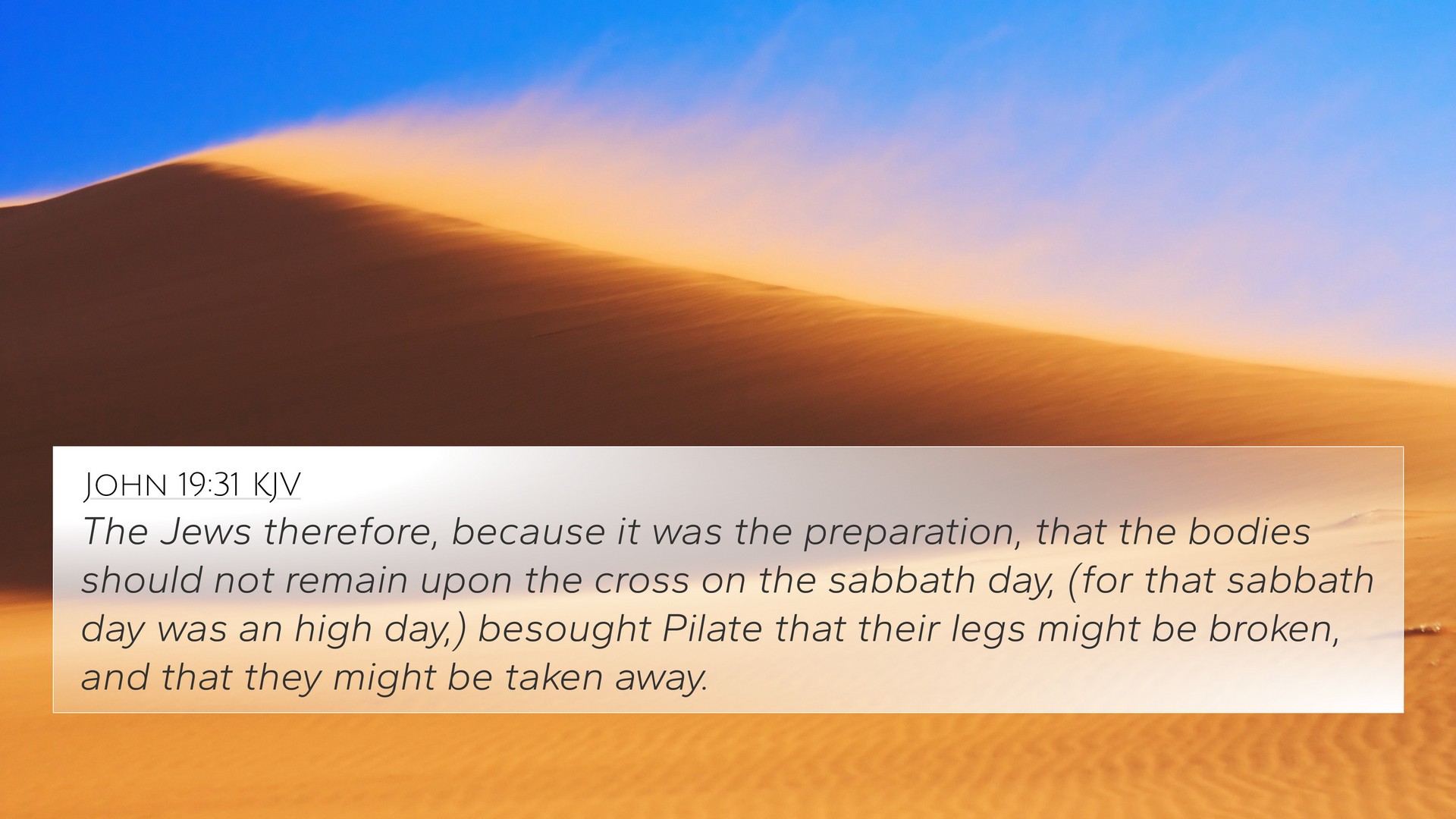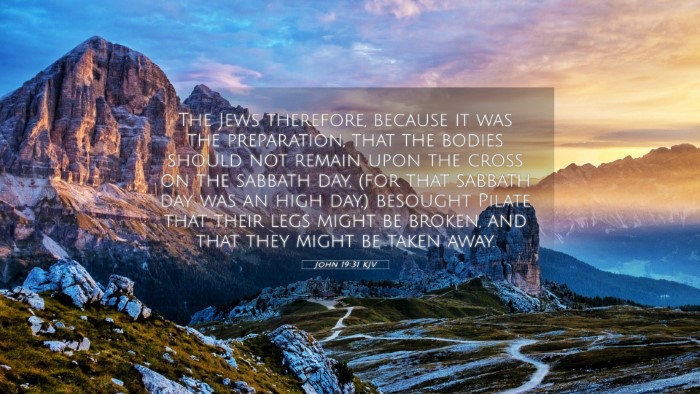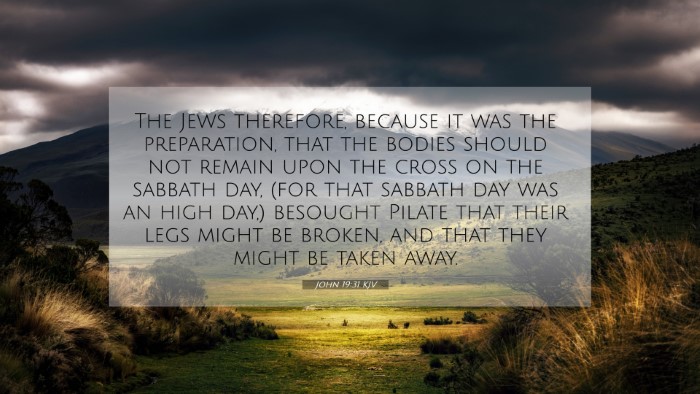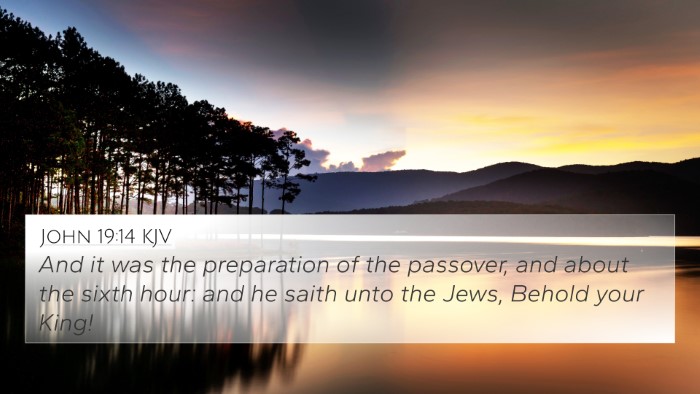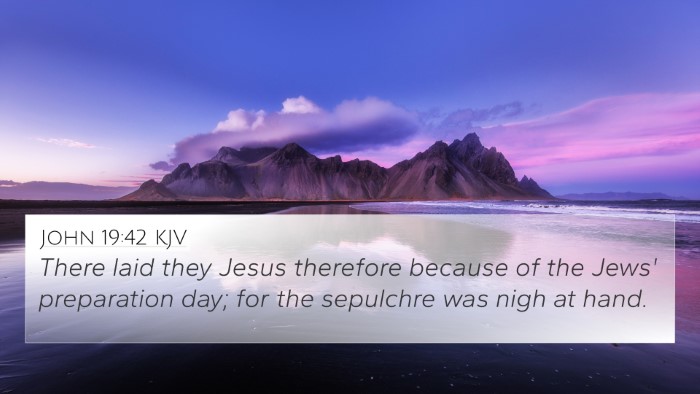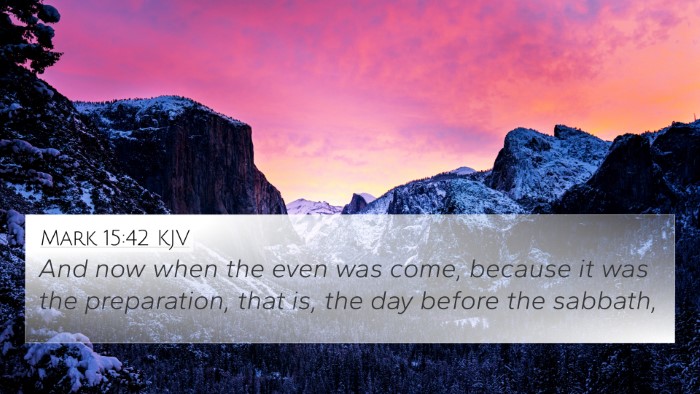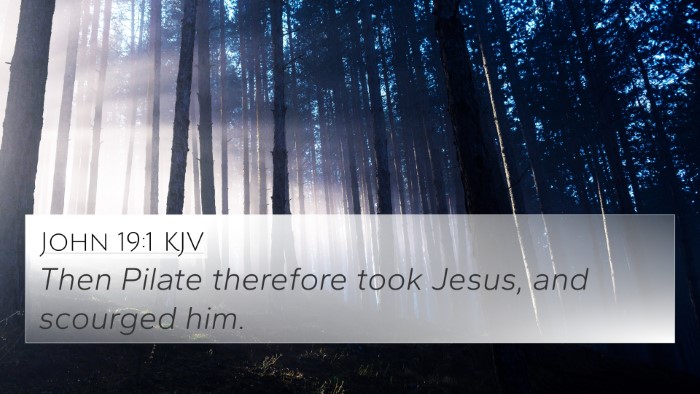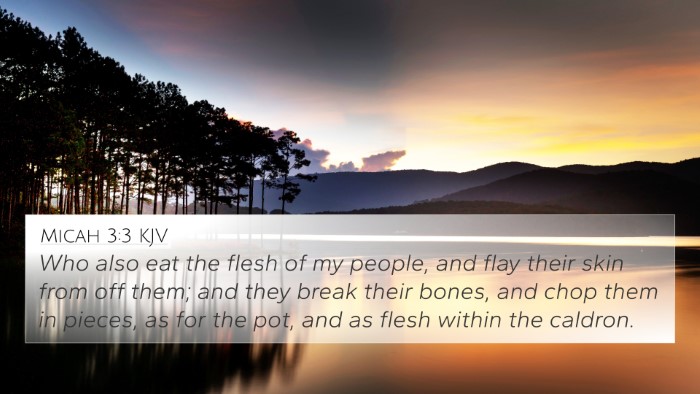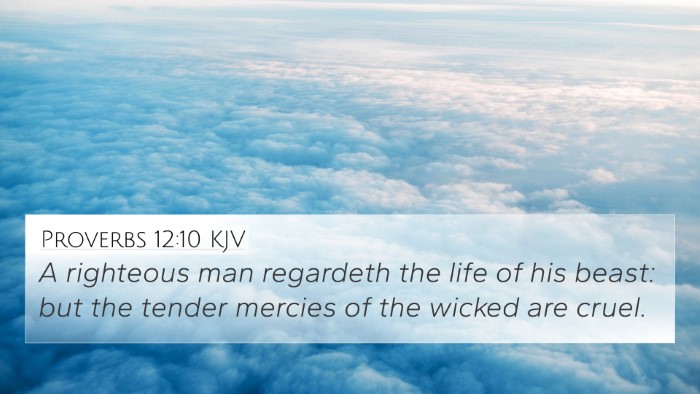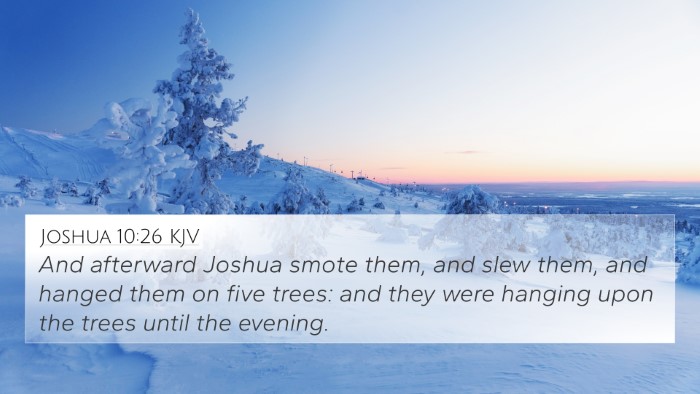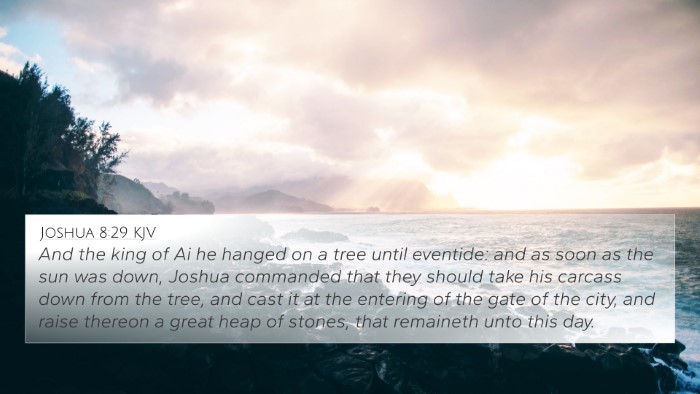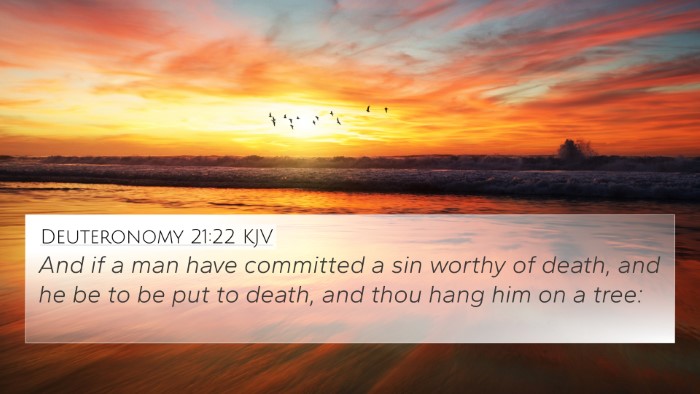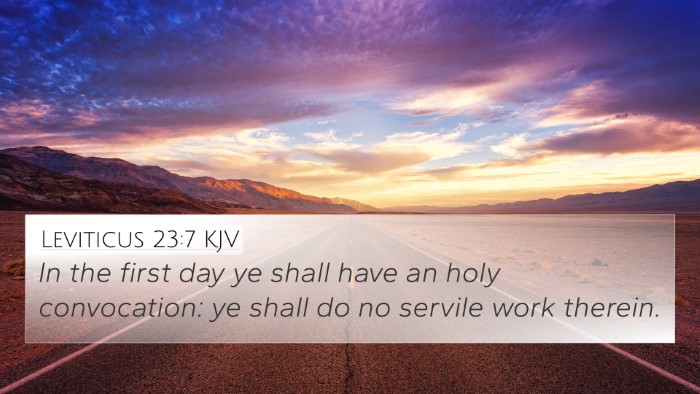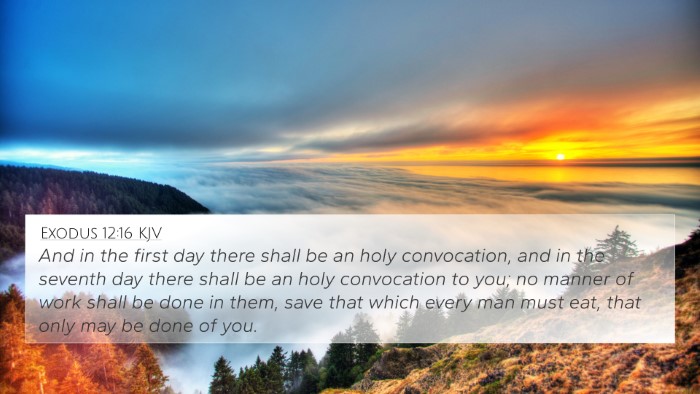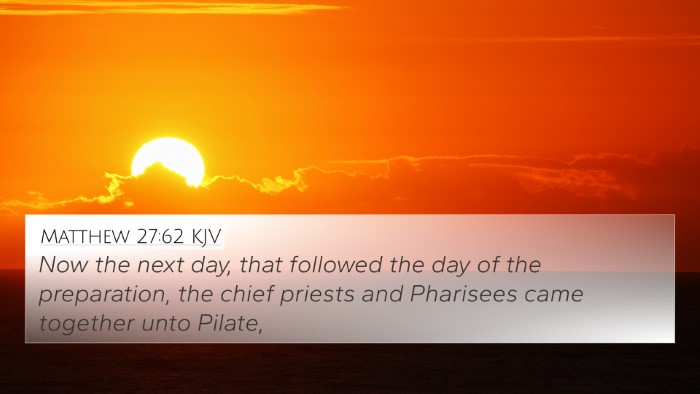Understanding John 19:31
John 19:31 states, "Since it was the day of Preparation, and so that the bodies would not remain on the cross on the Sabbath (for that Sabbath was a high day), the Jews asked Pilate that their legs might be broken and that they might be taken away." This verse captures the urgency surrounding the crucifixion of Jesus and outlines the customs of the Jews regarding the Sabbath. In the crucifixion narrative, the verse provides crucial details regarding the timing and the context of these events, which holds thematic significance to the entire biblical narrative of Christ’s sacrifice and its implications.
Commentary Insights
This commentary will synthesize insights from Matthew Henry, Albert Barnes, and Adam Clarke to provide a well-rounded interpretation of John 19:31.
Matthew Henry’s Commentary
Matthew Henry explains that the desire of the Jews to have the bodies removed from the crosses reflects their adherence to the Law of Moses. The urgency of proper burial practices during the Sabbath underscores the importance they placed on ceremonial purity and observance of the Sabbath. Henry emphasizes that their demand also illustrates the lengths to which the religious authorities would go to maintain their interpretation of Israel's laws, even when juxtaposed against the profound events of Christ's crucifixion.
Albert Barnes’ Notes
Albert Barnes highlights the significance of the "day of Preparation," pointing out that it refers to the day before the Sabbath when Jews would prepare for a day of rest, thus preventing any work that might violate it. He notes that breaking the legs of the crucified would hasten death, allowing for a quick removal from the cross. Barnes further comments on the theological implications of the event, illustrating how Jesus’ death fulfilled the Prophetic Scriptures and realigning expectations of the Messiah's mission with the necessity for atonement and the sacrificial system central to Jewish thought.
Adam Clarke’s Commentary
Adam Clarke adds historical context to the practice of removing bodies from crosses before the Sabbath. He notes that this was especially pertinent during Passover, which coincided with the events surrounding Jesus’ crucifixion. Clarke underscores the prophetic nature of these details, bringing forth reflections on the character of Jesus as both the sacrificial lamb and the fulfillment of the law. He draws connections to how this setting fulfills the typological elements present in the Jewish paschal lamb traditions.
Thematic Connections and Cross-References
In exploring John 19:31, it is essential to draw connections with other Bible verses that enhance understanding through contextual and thematic lenses. Here are some relevant cross-references that illustrate the connections between Bible verses:
- Exodus 12:46 - "It shall be eaten in one house; you shall not take any of the flesh outside the house, and you shall not break any of its bones."
- Numbers 9:12 - "They shall leave none of it until the morning, nor break any of its bones; according to all the statute for the Passover they shall keep it."
- Psalms 34:20 - "He keeps all his bones; not one of them is broken."
- Matthew 27:62-64 - "The next day, that is, after the Day of Preparation, the chief priests and the Pharisees gathered before Pilate."
- Mark 15:43-45 - "Joseph of Arimathea, a respected member of the council, who was also himself looking for the kingdom of God, took courage and went to Pilate..."
- Luke 23:54 - "It was the day of Preparation, and the Sabbath was beginning."
- Hebrews 4:9-10 - "So then, there remains a Sabbath rest for the people of God..."
- 1 Corinthians 5:7-8 - "...For Christ, our Passover lamb, has been sacrificed. Therefore let us celebrate the festival..."
- Revelation 5:6 - "And between the throne and the four living creatures and among the elders I saw a Lamb standing, as though it had been slain..."
- 1 Peter 1:18-19 - "...but with the precious blood of Christ, like that of a lamb without blemish or spot."
Conclusion
John 19:31 serves not only as a historical account but as a profound theological statement regarding the fulfillment of the law and prophetic Scriptures through Jesus' sacrificial death. Through the insights from various commentaries, we ascertain the deeply ingrained cultural practices of the Jews alongside the divine narrative at play. Understanding this verse via cross-referencing encourages a comprehensive engagement with Scripture, establishing connections between texts and enhancing the broader narrative of redemption. The interplay of the customs of the first-century Jewish community versus the unfolding Christology presents us with a rich tapestry deserving of detailed exploration.
